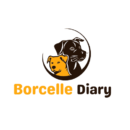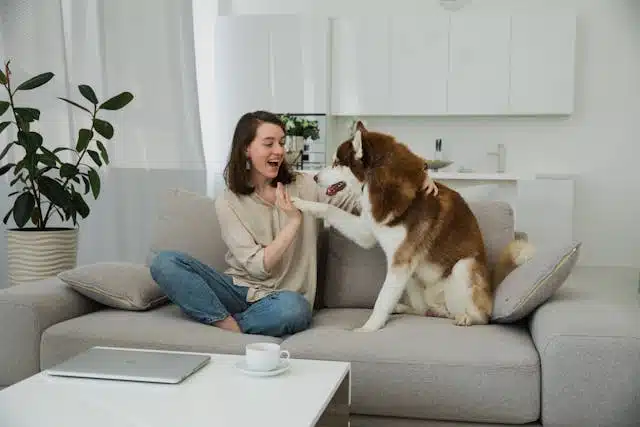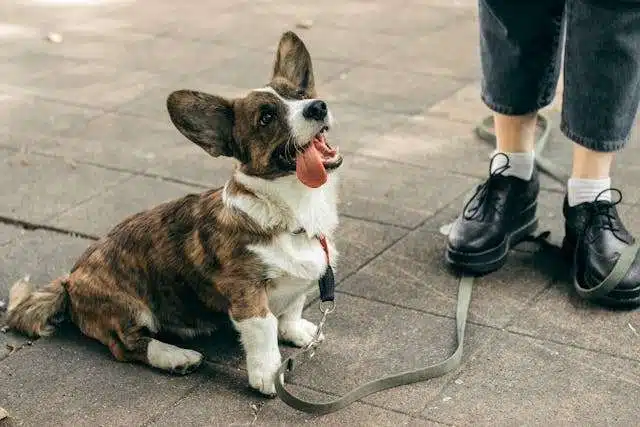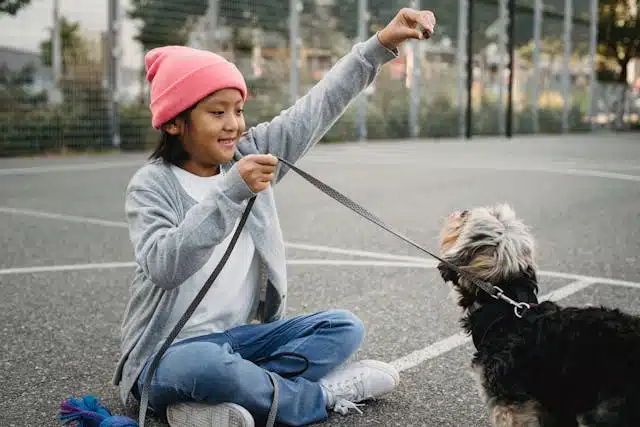Communicate with a dog in their language—do you also find yourself talking to your dog in full sentences, wondering if they really understand you? If so, you’re gonna want to read this article till the end. Today, I’m going to teach you how to speak to your dog in a way that they can actually understand. And at the end, I’m going to give you a challenge that, if you take it, I guarantee is going to improve your communication with your dog.
So, getting right into it, one of the most common problems that I see is people over-communicating with their dog every single day, meaning using way too many words. Now, through no fault of their own, it’s only natural for us humans to communicate with our words—that’s what we’re used to. But dogs aren’t humans. Shocker, I know, right? But what I mean by that is that different species communicate in different ways, and dogs are no exception to that.
To truly communicate with a dog in their language, it’s important to understand how to effectively use your words when communicating with your dog, and that’s what this article is all about.
Table of Contents
ToggleWhy Talking To Your Dog Confuses Them
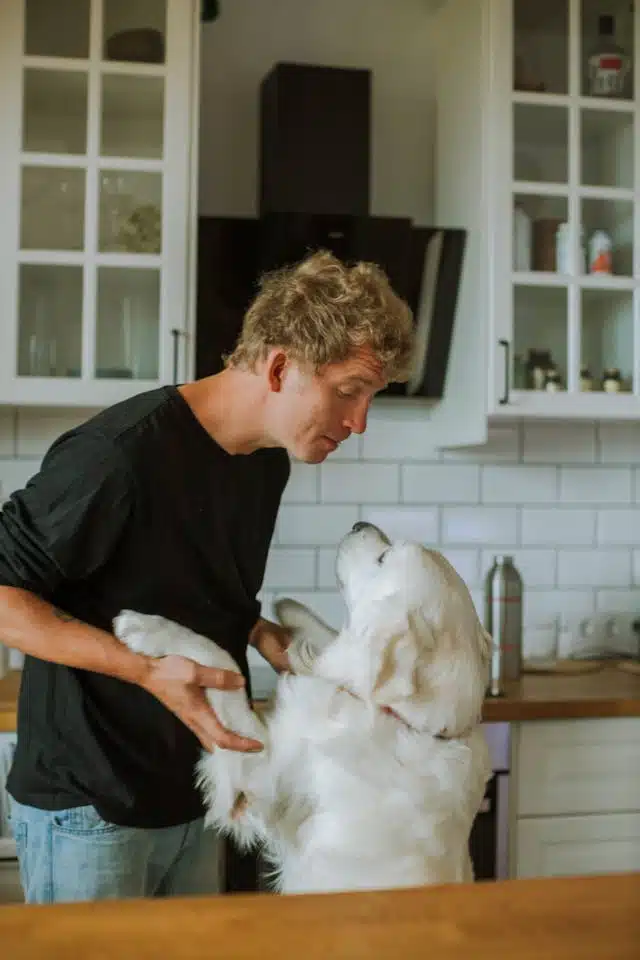
So, why is talking to your dog so confusing to them? Well, when you’re trying to provide direction and they only understand a word or two out of an entire sentence of what you’re saying, it can be incredibly confusing. Giving a dog full sentences when trying to provide direction or a cue to them is like asking for directions when you’re in a foreign country and there’s a language barrier.
The person you’re talking to doesn’t understand your language and maybe can pick out a word or two here or there, but there’s no context to those words, so it might lead you down the wrong path or in the wrong direction. The same goes with your dog—they only understand a word here or there and they try to piece that together. So, the result could be an undesirable behavior or your dog learning to ignore you because they can’t understand what you’re asking anyhow.
To give you an example of what some of the things are that people say that might be a little on the wordy side: Something like asking for a simple sit. It’s one thing to say to your dog, “Are you gonna be a good girl and are you gonna sit for me?” When you want your dog to sit, simply say the word “sit.” It’s clear, it’s concise, and it’s much easier for them to understand.
Another example might be, “That treat’s not for you, that treat is for me.” All your dog heard in that sentence is the word “treat” twice. Now, they’re honed in on the idea that they’re gonna get a treat instead of them not touching the thing that is for you and not for them.

Little inside tip, because I know some of you right now are like, “Whoa, whoa, wait a minute, my veterinarian talks to my dog all the time when I’m in the exam room.” Just to give you a little inside tip, like I said, the words are not actually for your dog. That sweet, soothing tone is for your dog to keep them calm and keep them comfortable, but all of the words that your veterinarian is saying to your dog, for example, “Oh my Fluffy, you’ve put on a little more than fluff since the last time that I saw you,” that’s a gentle way to express to you that your dog is a little on the overweight side.
So, next time your veterinarian is talking to your dog in the exam room, really listen to what it is that they’re saying to your dog and understand that the tone is for the dog, whereas the words are actually for you, the owner.
Words Are Just Sounds To Your Dog

Dogs don’t possess the ability to comprehend language the same way that we do. To communicate with a dog in their language, we must understand that a word has a meaning to us, that is very specific and never changes—it always means the same thing no matter what. For a dog, a meaning can change at any time because words that we teach them aren’t actually built on definitions—they’re built on sounds, sounds that we associate with something over and over and over again.
To give you an idea of what I mean, so let’s say we decided to take our dog out for a walk in the park to go see the birds. And we’re saying: “Alright, Daisy, you wanna go to the park? We’ll go for a walk and see the birdies. Oh yeah, yeah, we’re gonna go in the car. Yes, okay. Alright, we gotta be good though. You gotta be good. Are you being good?”
Now here’s what Daisy probably is actually hearing and extracting from that conversation: “Walk, birdie, car, good.”
So, for Daisy, she maybe has an association with three of those words: “walk,” “birdie,” and maybe “car.” The rest is all wants, and she doesn’t hear anything else in between. So, a lot of the reason that Daisy is actually responding to those words in the beginning had nothing to do with the actual conversation or the full sentences—it was much more about the tone. Tone can create associations as well.
So, if you’ve taught your dog to go fetch in a really high, happy tone and voice, you might notice a big difference and it might actually confuse them if you say it in a more casual tone, like “go fetch.” They might not know what you mean because they have a very specific association based on that tone as well.
The same goes if you attempt to get your dog to lay in a new bed. If you’ve taught your dog “go to your bed” means go to your very specific bed that you’ve had all along in a very specific room, and you try to do that at a friend’s house or someone else’s house that has a bed right in front of the dog, and you say “go to your bed,” chances are they’re not going to know that “bed” to you means any bed that you’re asking them to go to.
They might be confused and look around the house to see if they can find their place and their bed that they’ve built an association with that term.
Your Tone, Volume And Energy Matter
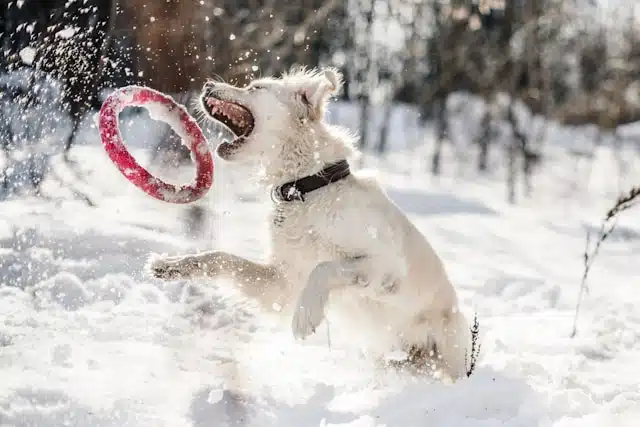
Let’s talk about how tone and energy can play a role in all of this. We’ll use the example of when we asked Daisy if she wanted to go for a walk in the park to see all the birds: “Alright, let’s get in the car.” Now, she has an association with the word “bird” because she gets really, really excited when she hears that word.
Usually, she knows that she’s a little tired out right now, but her association with that word is super high energy. The same thing with “walk”—that word is associated with super high energy as well. So, just taking out the leash gets them excited because they’re going to go for a walk. But when you use the words over and over and over again, you really jack that energy up super, super high—top level. So, what’s the problem with them being super excited to go out for a walk or go to the park? We should be excited, right?
The problem comes into play when humans get frustrated with their dogs and even correct or punish their dog. When they get to that external environment and their dog is all jacked up, they’re much more likely to get a case of selective hearing or be reactive to their external environment—other animals, other dogs, that sort of thing. Dogs just make much better decisions altogether when they’re in a thinking state of mind and they’re nice and calm and not super jacked up on energy and being really, really impulsive.
Ultimately, it makes no sense to get frustrated with your dog if you’re just trying to go for a relaxing walk in the park with your dog, but you’ve just spent this time getting them all jacked up and excited and ready to go like they’re about to enter a cage fight.
Now, this doesn’t mean you shouldn’t talk to your dog at all—by no stretch. All it means is that you shouldn’t have full-on conversations with your dog when you’re trying to provide direction. Dogs love it when you talk to them; that’s why you get that cute little side head tilt and they listen intently and they get the wiggles when you carry on a conversation with them.
Yes, continue doing that—just not when you’re trying to provide direction to your dog. Use very short, concise, and clear words to effectively communicate what it is that you’re trying to convey to your dog. It makes it much simpler. What that means is less frustration for them, less frustration for you, more compliance overall, and most importantly, a much better relationship with your dog.
The Challenge
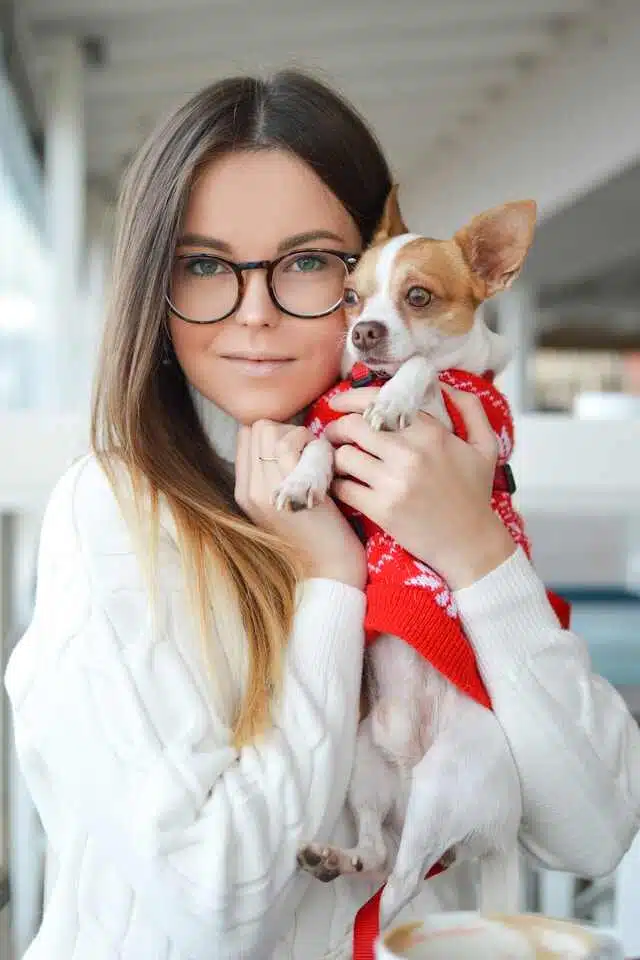
Okay, so here’s the challenge. What I want you to do is pick one whole day—perhaps a Saturday or a Sunday that you’re off and you can practice this a lot throughout the day. I want you to only use one single word with each individual interaction that you have with your dog.
Bonus points if you can use no words in communicating with your dog throughout this experiment. See how your dog responds to no words but only using your facial expressions, using your body language, and using rewards when they exhibit desirable behaviors, and removing rewards when they exhibit undesirable behaviors. Check-in with your dog and see how they respond to that.
Let me go ahead and give you an example of what that looks like. So, I’m going to use the same example from the earlier scene when we wanted to take Daisy for a W-A-L-K. Let’s see what this should look like to keep the energy level down and effectively communicate: “Good girl, going in.”
So, that might seem like a pretty simple example. My guess is your dog is probably more excited than Daisy—she’s typically a lower-energy dog. But the whole idea is less communication is better, helps keep that energy level down low, keep them in the right frame of mind, and listening in for those cues for the words that they do know and will respond to so they don’t become selective listeners.
